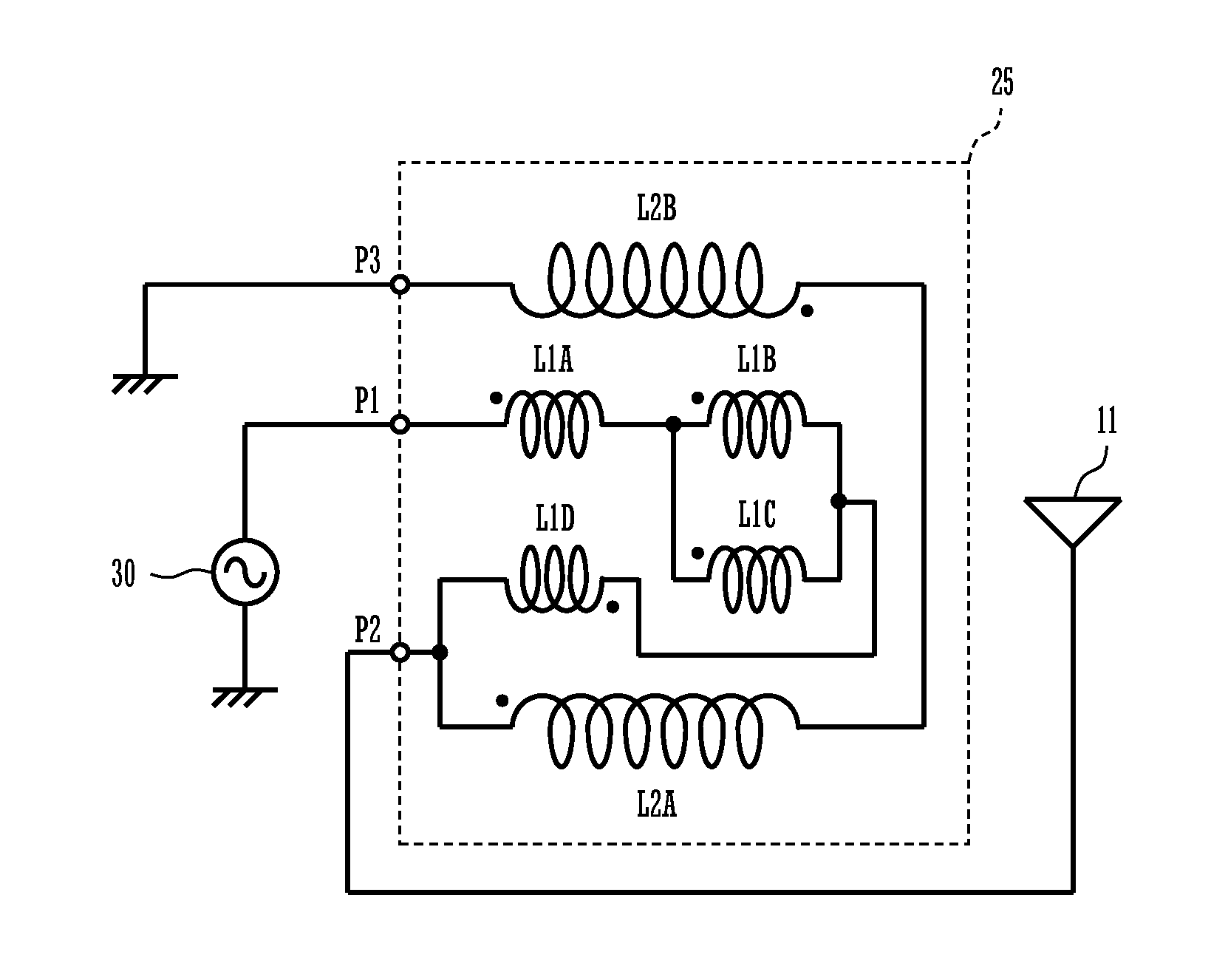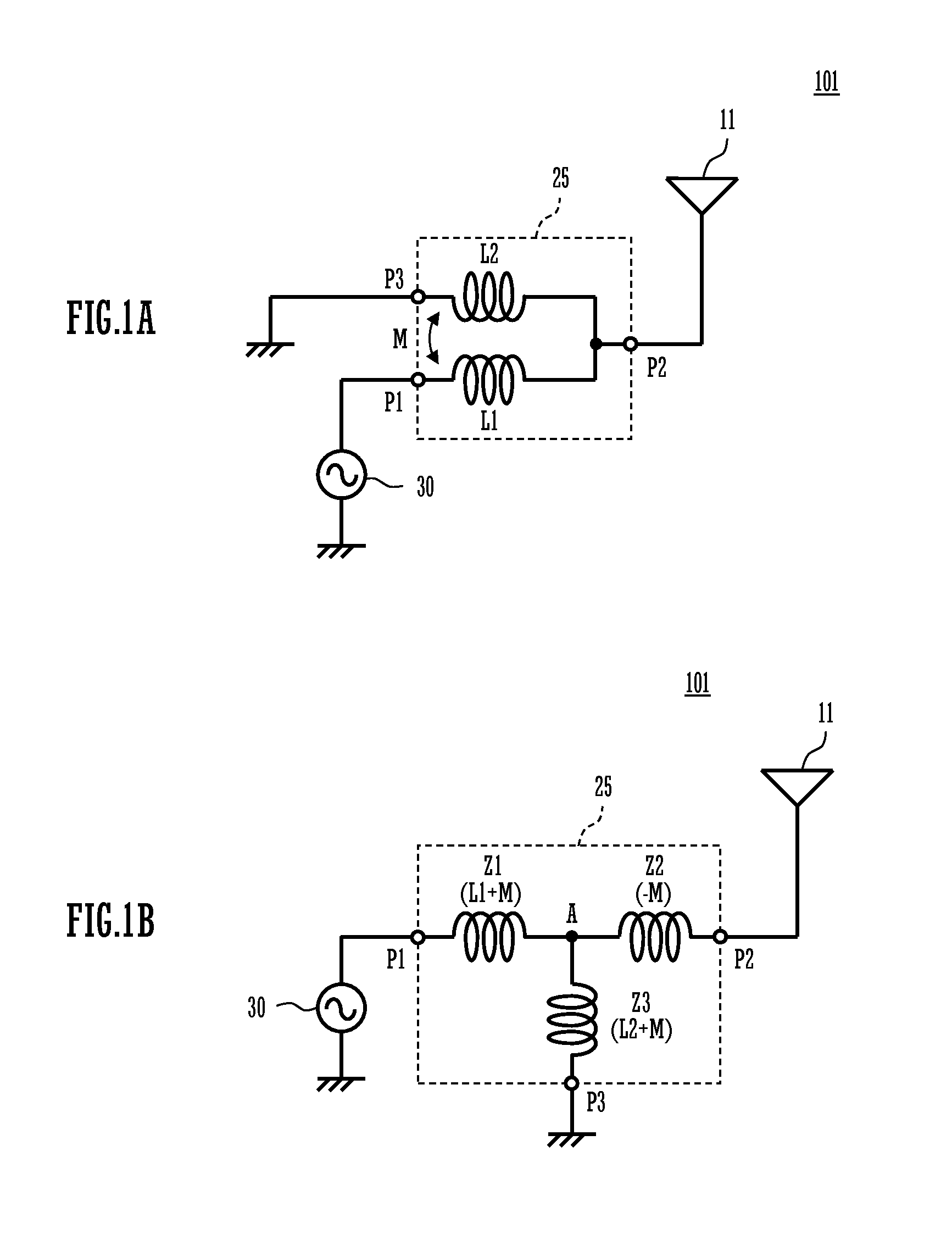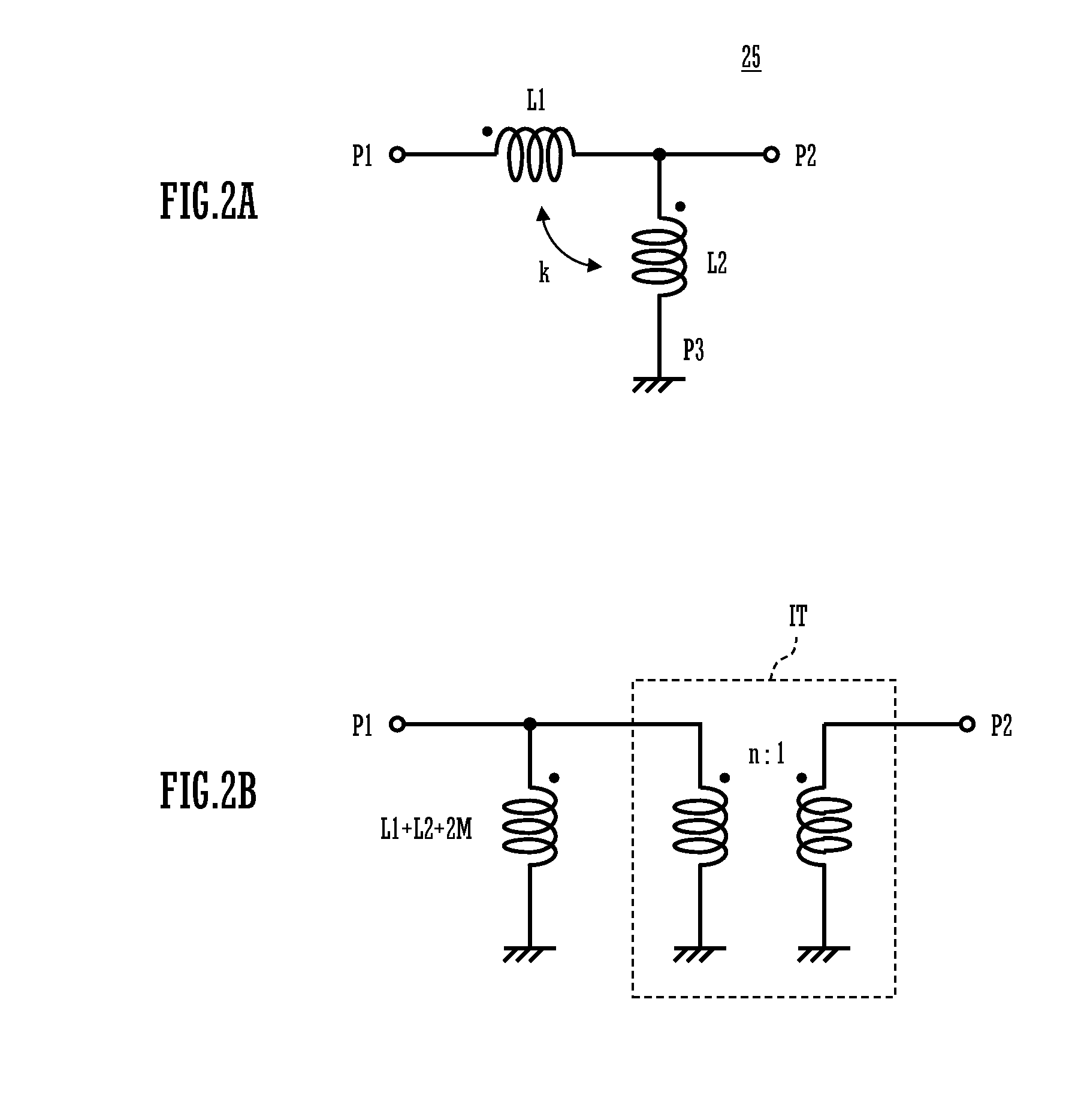Impedance transformation circuit and wireless communication apparatus
a technology of impedance transformation and wireless communication, which is applied in the direction of impedence networks, fixed transformers or mutual inductances, inductances, etc., can solve the problems of difficult to obtain the desired inductance value for each of the primary coil and the secondary coil, and achieve the expansion of the setting range of impedance transformation ratios and the number of turns of the second coil element. , the effect of increasing the inductance of the second coil elemen
- Summary
- Abstract
- Description
- Claims
- Application Information
AI Technical Summary
Benefits of technology
Problems solved by technology
Method used
Image
Examples
first preferred embodiment
[0052]FIG. 1A is a circuit diagram of an antenna device 101 preferably including an impedance transformation circuit 25 according to a first preferred embodiment of the present invention, and FIG. 1B is an equivalent circuit diagram thereof. For example, in a case of a penta-band supported cellular phone terminal, the cellular phone terminal supports five bands GSM850 / 900 / 1800 / 1900, and UMTS band 1 (GSM is a registered trademark).
[0053]As illustrated in FIG. 1A, the antenna device 101 includes an antenna element 11 and the impedance transformation circuit 25 connected to the antenna element 11. In the Low Band, the antenna element 11 resonates in a fundamental wave mode, and in the High Band, the antenna element 11 resonates in a higher harmonic wave mode. The impedance transformation circuit 25 is connected to a feeder terminal of the antenna element 11. In the impedance transformation circuit 25, a primary coil L1 is inserted between the antenna element 11 and a feeder circuit 30....
second preferred embodiment
[0079]FIG. 13 is a circuit diagram of an impedance transformation circuit 26 according to a second preferred embodiment of the present invention shown in view of an arrangement relationship between a primary coil and a secondary coil. Like the impedance transformation circuit 25 according to the first preferred embodiment of the present invention, the impedance transformation circuit 26 according to this preferred embodiment preferably includes a stacked body structure in which a dielectric base material layer and a conductive pattern are stacked. The same applies to each of preferred embodiments described after this preferred embodiment. FIG. 14 is a perspective view of various kinds of conductive patterns in the impedance transformation circuit 26. However, the dielectric base material layers on which these conductive patterns are provided are omitted and are not drawn therein.
[0080]As shown in FIG. 14, a first loop-shaped conductor LP1 with conductive patterns L1A, L1B, a second ...
third preferred embodiment
[0084]FIG. 15 is a circuit diagram of an impedance transformation circuit 27A according to a third preferred embodiment of the present invention. FIG. 16 is a figure illustrating a conductive pattern provided in each base material layer of the impedance transformation circuit 27A according to the third preferred embodiment. It is to be noted that the basic configuration is the same as that of the impedance transformation circuit 25 according to the first preferred embodiment, and therefore, the description thereof is omitted here. In this example, a primary coil includes conductive patterns L1B, L1C, and a secondary coil includes conductive patterns L2A, L2B. The conductive pattern L1B, L1C included in the primary coil are adjacent to each other in a stacking direction, and are connected in parallel. The conductive patterns L2A, L2B included in the secondary coil are arranged so as to sandwich the conductive patterns L1B, L1C in the stacking direction, and are connected in series.
[0...
PUM
 Login to View More
Login to View More Abstract
Description
Claims
Application Information
 Login to View More
Login to View More - R&D
- Intellectual Property
- Life Sciences
- Materials
- Tech Scout
- Unparalleled Data Quality
- Higher Quality Content
- 60% Fewer Hallucinations
Browse by: Latest US Patents, China's latest patents, Technical Efficacy Thesaurus, Application Domain, Technology Topic, Popular Technical Reports.
© 2025 PatSnap. All rights reserved.Legal|Privacy policy|Modern Slavery Act Transparency Statement|Sitemap|About US| Contact US: help@patsnap.com



